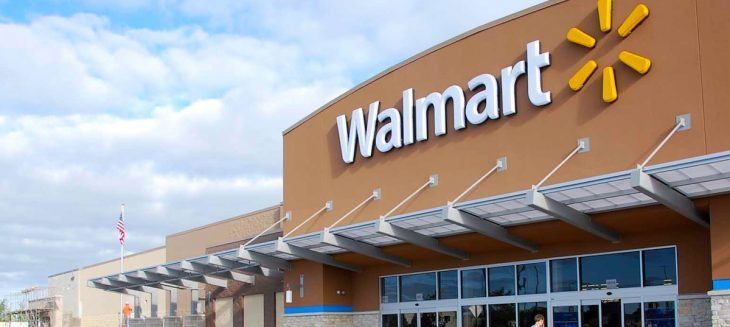Wal-Mart’s first quarter net income expected to dip despite slightly higher revenue
by May 15, 2017 5:58 pm 558 views

Last week’s earnings reports from department stores Macy’s, J.C. Penney and Kohl’s were not good. Analysts say that trend could change this week with quarterly reports from Wal-Mart Stores, Home Depot and Target.
Home Depot reports before the market opens on Tuesday (May 16). The big box building giant is expected to earn $1.61 per share, up 11% from a year ago. Revenue is expected to jump 4.2% to $23.72 billion for the quarter. Wal-Mart and Target are expected to report lower profits, though Wal-Mart is looking for positive same-store comps and slightly higher revenue when it reports early Thursday (May 19).
Analysts said one thing Home Depot, Wal-Mart and Target have in common is their growing e-commerce businesses, which is an important key to long-term viability in the competitive retail space. Wal-Mart’s e-commerce sales are still just about 3% of the total revenue, at Home Depot it’s nearly 6% of sales and at Target it’s just under 4%.
Target reports Wednesday morning (May 17) with Wall Street consensus at 91 cents a share, compared to $1.29 a year ago with revenue falling 3.5%.
WAL-MART PREVIEW
Wall Street expects Wal-Mart to report a respectable first quarter with net income around $2.93 billion, down 4% from the same period a year ago. The lower profits come as the retail giant continues to invest in its e-commerce business, including three acquisitions thus far this year.
Wal-Mart is expected to see same-store sale growth between 1% and 1.5% in its U.S. stores which would make the 11th consecutive quarter for positive comp sales. Traffic has been up 10 straight quarters and analysts expect to see slightly positive traffic comps for Wal-Mart U.S. and Sam’s Club for the first quarter.
Net revenue is expected to grow 1.6% to $117.77 billion for the quarter ending May 1. Analysts are mixed with their ratings on the stock. Nine rank the stock a “buy” and 18 see it as a “hold” given the ecommerce investments made at the expense of income. Four other analysts rate the stock a “sell,” saying they don’t have the patience to wait out the retailer’s long-term play.
Wal-Mart’s own guidance for the quarter ranges from 90 cents to $1 per share, reduced from 96 cents a share during last quarter’s earnings announcement.
BULLISH BET, RETAIL SALES NATIONWIDE
Budd Bugatch, an analyst with Raymond James & Associates, continues to lead the bulls favoring Wal-Mart stock. His earnings estimates are at the high end of the range at 97 cents per share with a target price of $80, and a “buy” recommendation.
Bugatch admits that Wal-Mart’s lack of near-term earnings growth stretches his valuation but he believes management’s actions will continue to drive traffic and comp-store sales growth in the coming quarters.
“I believe the risk to reward is still favorable,” he said.
Wal-Mart shares (NYSE: WMT) closed Monday at $76.29, up 58 cents. Wal-Mart shares are up 10.48% year-to-date. The low point year-to-date was $65.66 on Jan. 27 and shares peaked at $76.72 on May 19.
Craig Bowles, with Selerity Inc., said Wal-Mart’s online efforts continue and that is keeping analysts interested. He also said Wal-Mart has beaten analysts consensus over the past four quarters by an average of 5 cents. Daniel Binder, an analyst with Jefferies, believes sales momentum likely continued for Wal-Mart in the first quarter driven mostly by better store execution, lower prices and continued improvement in e-commerce. He recently said in a note to investors that Wal-Mart has put more resources toward its food and consumable and apparel divisions, with the company also hoping to maintain good margins with its competitively low prices.
Retail sales as reported by the U.S. Department of Commerce show a mixed bag for retailers. April sales growth was led by online and other non-store retailers, electronics stores, and building materials and supplies. On a three-month moving average, retail sales have grown 2.6% year-over-year, according to the National Retail Federation.
“While the interplay between consumer confidence and spending is difficult to gauge, retail sales trends and recent consumer sentiment readings are consistent with a pickup in the pace of the economy in the coming months,” said NRF chief economist Jack Kleinhenz. “The housing recovery has been an important variable in consumers’ willingness to spend. Low retail price inflation has continued, drawing in shoppers but providing heartburn to the bottom line for many retailers.”
